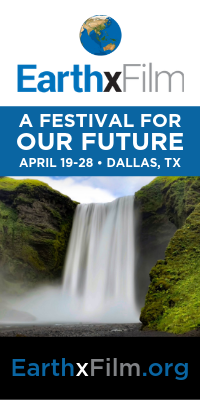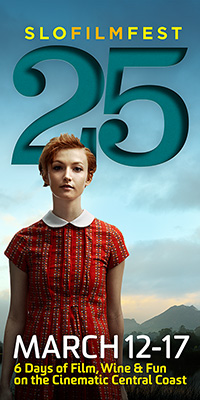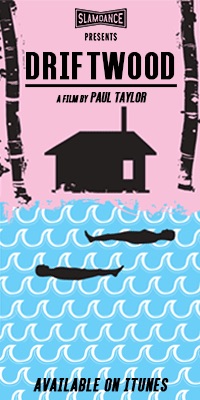Siena Pinney just won the women Texas Film Festival’s “Filmmaker to Watch” award for her work writing and directing the short film, POSSIBILITY. The film is a beautifully conceived, shot, and rendered look at two young people making the decision for her to have an abortion. The film has some semi-autobiographical elements to it and is remarkable in that it manages to deal with a high-alert issue without blinking by focusing solely on the two people that make up the couple – their caring for each other, their fears, and their mutual support as they face such a critical decision. That description could also apply to the filmmaking itself, which is why Pinney made a fitting honoree.

Siena Pinney, accepting her “Filmmaker to Watch” award at the Women Texas Film Festival on Sunday, August 20, 2017 (Photo by John Strange)
- POSSIBILITY navigates the politically fraught territory of the abortion issue, frankly, by not attempting to navigate it at all. How much of a concern was that when you conceived of the project?
When I write it always starts from a personal place. I knew that I wanted to tell a story that focused on the very intimate experience of a young couple going through an abortion. Rather than taking a political stance, I wanted to show the emotions surrounding this experience.
Personally, I don’t think women should ever have to feel ashamed to talk about their abortion stories–it is an experience that so many of us share. But it’s also an experience that can be confusing, sad, heartbreaking, hopeful… I wanted to show that spectrum of emotions.
My main hope in making it was that women would relate and feel more comfortable to open up about their own experiences. But I also hope that whatever your political stance on abortion is, you can see the humanity in these characters without judging them. Actors Allie Pratt and Marcos Gonzalez did a beautiful job of bringing these nuanced emotions to the characters. At times it has been scary putting this personal story out in the world, but it was worth it to me to open up the conversation.

Allie Pratt in POSSIBILITY
- There is a dreamy, beautiful romantic flavor to way the film is shot. What are your influences when it comes to cinematography?
I am a big fan of the cinematography in Krzysztov Kieslowski’s films. I think the influence of that intimate camerawork and dreamy way of seeing the world found its way into POSSIBILITY.
- Nicotine, acid, the morning after pill – life lived through chemicals. Which side of the spectrum do you personally find yourself on: chemistry project or organic? And how did that color the script?
To clarify, it’s not a morning after pill! This pill is called a “medical abortion” and is equivalent to having a surgical abortion in a clinic. This is something you would do once you are already 6 weeks or more pregnant (vs. morning after pill which you take to avoid getting pregnant in the first place). Some people don’t know this is an option, which is another reason I wanted to depict this method in the film.
When I was a teenager I experimented with various chemicals, so again that personal experience weaves its way into the film. I wanted to contrast the carefree wonder of their acid trip with the harsh reality of the abortion process. Acid allows them to be kids, while the abortion pill is forcing them to face something very adult. Both realities are distorted in some way, which is an interesting thing for me to play with as a filmmaker.

Marcos Gonzalez and Allie Pratt play a young a couple trusting each other to make a big decision in POSSIBILITY.
- You’ve gone back and forth between directing documentary shorts and narrative shorts. What’s your favorite thing about directing one versus the other and what’s the biggest pain-in-the-ass about each of them?
I started out wanting to be a documentary filmmakers. I still love it, but have been pulled away by the creative lure of narrative film. What I love about documentary is how it allows you to question the truth in any situation and play with the audience’s perceptions. It’s all about how you frame the material. The most annoying thing is having months worth of footage you may have captured and trying to funnel it down into a coherent short film.
My favorite thing about narrative is how it allows me to put personal stories on the screen while also letting my imagination run wild and get a little experimental. I think the hardest thing about narrative is making the world and characters believable when there’s so much artifice in the process.
- Since you have assisted on camera as well as directed, can you show your geek colors a bit by saying what your favorite camera is and why you like it the best?
I came to film through still photography, so I love working as a cinematographer or camera operator as well. I’ve used my 5D Mark III on many personal projects as well as a feature that I was the DP on, and I have to say I will always love it for its ease to work with and the versatility. With some nice lenses you can achieve a great look for little money.
On POSSIBILITY, we used a RED Dragon and the amazing skills of cinematographer Michael Lang, which kicked things up a notch. I still shoot stills on 35mm film, and will always love the film medium. Besides messing around with 16mm in film school, I’ve never had the chance to shoot a movie on film, but my dream would be to make something on 35mm! Even though that is getting more and more rare and most people will argue it doesn’t make a difference, I still love the look.

- It is such a wonderfully nuanced and delicate telling of a very personal moment for a young girl and a couple, can you describe what the biggest challenge was in editing POSSIBILITY?
My editor, Michael Larson, and I worked together closely on the film, and the hardest parts to edit were the dreamy acid sequences. We shot a lot of improvised material for these sections and knew what we wanted to piece together but didn’t have a set-in-stone shot list for these sequences.
There were so many options for how to edit this material that it became overwhelming. We had to refocus on the storytelling and the emotions of the characters, and once we had that base we found some fun ways to get trippy and dreamy with the visuals.
- Popcorn or Candy?
Candy (if it involves chocolate).
POSSIBILITY is currently available on Vimeo. You can also find the film and follow the filmmakers at facebook.com/Possibilityfilm to stay up to date on further screenings and news.

Siena Pinney








READER COMMENTS